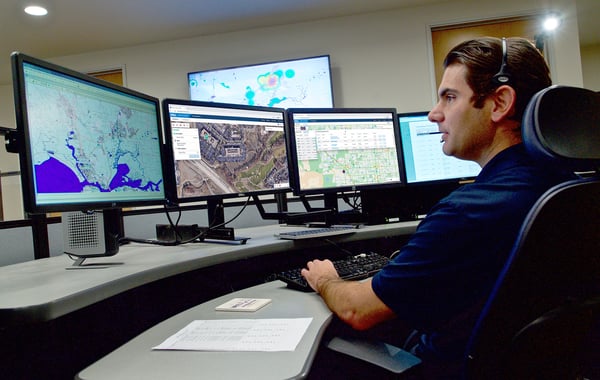Your Agency Isn’t Getting Paid: Here’s What You Can Do
2018 EMS in Review
(6 minute read) There is never a year that is more interesting than the last, at least from my perspective
Was this information valuable?

(6 minute read)
There is never a year that is more interesting than the last, at least from my perspective. Some things come to pass, other’s get delayed, yet others spring from an unexpected well or rebirth of a phoenix.
It is helpful to identify trends and moments in EMS, resuscitation, and time-dependent illness and injury where an acute healthcare vision evolved appropriately, while we were on duty/saving lives in 2018.
Sit back and see if any of these issues make sense. Please feel free to leave comments. I could not include every issue that faces EMS, but this piece does address several key concerns and future challenges.
Some of these topics are not cutting edge or sexy, but they are touching lives and impacting the health of our country. As much as I would like to see clinical issues dominate EMS and Emergency Medicine, it is public health commanding both the healthcare provider and the patient’s attention.
The US Opiate Epidemic
Opiates, significantly fentanyl, dominate our public health crisis often through unintentional suicide. How could this happen and why can’t we control it? Fentanyl is 50 to 100 times stronger than morphine. It is significantly cheaper to manufacture, (much of it coming from China). Since fentanyl is cheaper than other opiates, it is used to cut or dilute street versions of these drugs. Users are often unaware what they are receiving, resulting in increased unintentional overdoses across our communities. Out of the over 72,000 deaths associated with overdoses in the US, 50,000 were associated with opioids of which 30,000 were associate with fentanyl in 2017.
This becomes an even more concerning issue for first responders. Every EMS Agency and Fire Department should have a program to monitor the opiate epidemic in their community. This is a public health crisis to protect both the community and our responders.
EMS Professional Mental Health
EMS practitioners and other front-line emergency healthcare providers face challenging and traumatic events that can impact their mental well-being each and every day. The mounting effect on patient needs, family, long workdays, nutrition, physical health, and sleep deprivation all contribute to an individual’s sense of wellness. Several publications have highlighted the incidence of EMS provider attempted suicide rates at over 10% of the general population. We need to take care of and protect our own.
As an industry, we need to provide more resources, maintain a better ongoing safety net, and make the shift from reactively addressing mental health to proactively supporting and educating our people. Several resources are available through national, federal, and state organizations, including our federal partners in the EMS Office of the National Traffic Safety Administration (NHTSA), the National Association of State EMS Directors (NASEMSO), the National Emergency Medical Technicians (NAEMT), the National EMS Management Association (NEMSMA), the American College of Emergency Physicians (ACEP), the Nation Association of EMS Physicians (NAEMSP), and the American Ambulance Association (AAA).
EMS Payment for Non-Transport
2018 brought some interesting dialogue in the area of payment/reimbursement. First, a few payers introduced plans to reimburse EMS for either the non-transport of a patient, or the transport of the patient to a less costly non-Emergency Department location. Anthem implemented a plan in 2018 to compensate EMS for the care and transport of patients to urgent care centers and less emergent locations. Historically, EMS was typically bound to transport patients to an emergency department, at a much higher cost.
EMS, through community paramedicine and mobile integrated health has been pushing these same resource and cost saving initiatives but have been limited by state and federal policy. 2019 will be an interesting year as these policy, payer, and provider issues must get resolved. Is this finally a consistent, predictable revenue stream for EMS?
 EMS Cost Measurement
EMS Cost Measurement
Following extensive advocacy efforts led by the American Ambulance Association, the Bipartisan Budget Act of 2018 was passed into law in February of this year. This bill included language that extended the ambulance Medicare add-ons for five years but also required that ambulance services begin collecting and reporting cost data to the Centers for Medicare & Medicaid Services (CMS) in 2020. Seems like a straight forward process, right…
In reality, EMS is a cluster of very unique, diverse, and community service focused organizations. There is a mesh of public service fire/ems organizations that work with private/volunteer EMS transport organizations, all creating a 24/7/365 system of care for each community.
It is critical to understand the true cost of providing EMS services. This is a complex question and a difficult one to measure across our industry due to the extensive variability from fire, to EMS, to volunteerism, to hospital-based.
EMS cost measurement may be our biggest issue to tackle as an industry in 2019. It should knit together fire, EMS, volunteers, and systems of care. This should unite us, rather than divide us.
Another Year of Disasters (Hurricanes/Wildfires)
We have collectively experienced another year of natural disasters devastating our communities and the lives of our families, friends, and loved ones.
Things started this year with Hurricane Florence, which made landfall in my hometown of Carolina Beach/Wilmington, North Carolina. As it was approaching NC, it was a category 4 hurricane but stalled just off shore and downgraded to a category 2. As it turns out winds were not the issue, it was the 40 inches of rain in 26 hours. Wilmington, being a port city, drained most of eastern North and South Carolina. The result was the second 500-year flood in two years. All roads in and out of Wilmington were closed, requiring military airlift of rations and water for a week. The community was resilient but still very much hurting. Schools were out for a month as they were needed to shelter those who lost their homes. Public Safety, state and federal DMAT teams, EMS, and Fire all stepped up. They were the anchor in the storm.
Hurricane Mathew struck a few days later coming up the panhandle of Florida. It also threatened to come ashore as a category 4+ storm and unfortunately did not disappoint. Wind, as opposed to rain, was the issue in Florida. The one constant was our public safety, state and federal DMAT teams, EMS and Fire. There is never a doubt that the preparation, dedication, resources, and planning save countless lives. Thank you all!
Finally, the Camp Fire in California was historic from a lives’ lost and property destruction perspective. The fire was unable to be contained for 17 days, destroying over 150,000 acres, 18,804 structures, and 86 fatalities. Well over 6,000 firefighters were involved in containing the fire and the Camp Fire was one of the largest losses in California history.
Our thoughts and prayers to out to the families, friends, communities, and the public safety responders who touched so many lives through each of these events.
Mass Shootings
Through November 9th, 2018, there have been 334 mass shootings in the United States accounting for 13,953 (non-suicidal) deaths. 282 law enforcement officers were killed. Overall the number of gun-violence events climbed to 54,431 in 2018 to date.
Until formal policy is adopted, nationally, we have to train and be prepared for active shooter events. That includes equipment, integration between law, EMS, and fire. Several evaluations from larger events have recently been written up. We all should learn from them in support of community, public safety, and first responders.
 Happy Holidays
Happy Holidays
It seems sobering to provide an end of the year overview with several concerning topics. I still have tremendous faith in our community, public safety, systems of care, and EMS communities. You are the foundation of our future. Happy Holidays! I look forward to another forward-looking blog in January, highlighting what 2019 brings.
Related Posts
Meet the New ZOLL Dispatch and ZOLL Respond CAD Solution
Providers Can Even the Playing Field During Open Negotiations – Here’s How
ZOLL Pulse Blog
Subscribe to our blog and receive quality content that makes your job as an EMS & fire, hospital, or AR professional easier.
ZOLL Pulse Blog
Subscribe to our blog and receive quality content that makes your job as an EMS, fire, hospital, or AR professional easier.





